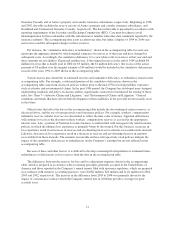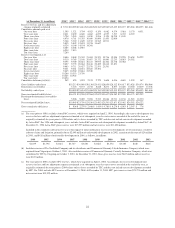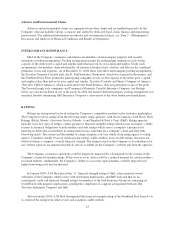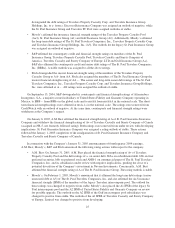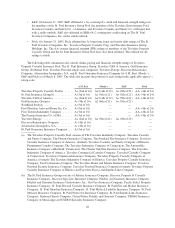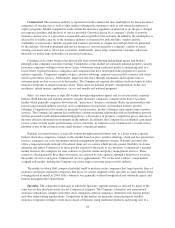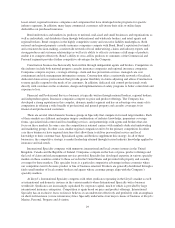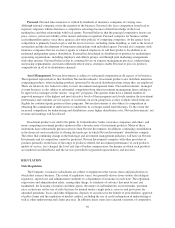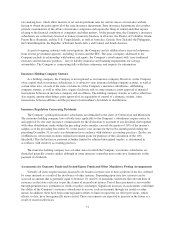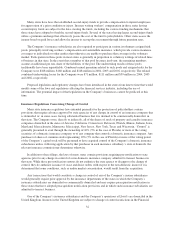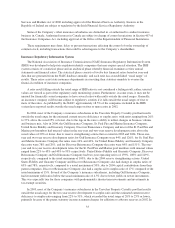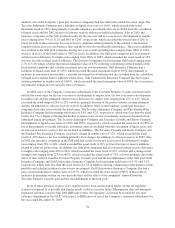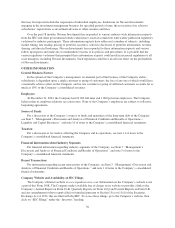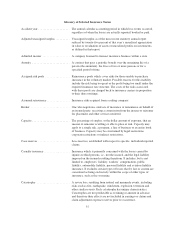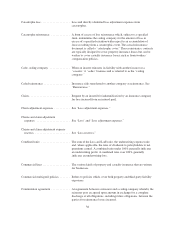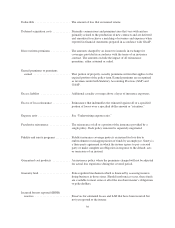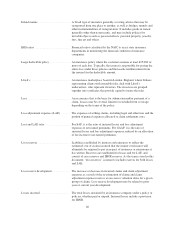Travelers 2004 Annual Report Download - page 42
Download and view the complete annual report
Please find page 42 of the 2004 Travelers annual report below. You can navigate through the pages in the report by either clicking on the pages listed below, or by using the keyword search tool below to find specific information within the annual report.Personal. Personal lines insurance is written by hundreds of insurance companies of varying sizes.
Although national companies write the majority of the business, Personal also faces competition from local or
regional companies which often have a competitive advantage because of their knowledge of the local
marketplace and their relationship with local agents. Personal believes that the principal competitive factors are
price, service, perceived stability of the insurer and name recognition. Personal competes for business within
each independent agency since these agencies also offer policies of competing companies. At the agency level,
competition is primarily based on price and the level of service, including claims handling, as well as the level of
automation and the development of long-term relationships with individual agents. Personal also competes with
insurance companies that use exclusive agents or salaried employees to sell their products. In addition to its
traditional independent agency distribution, Personal has broadened its distribution of products by marketing to
sponsoring organizations, including employee and affinity groups, and through joint marketing arrangements
with other insurers. Personal believes that its continued focus on expense management practices, underwriting
and pricing segmentation, and claim settlement effectiveness strategies enable Personal to price its products
competitively in all of its distribution channels.
Asset Management. Nuveen Investments is subject to substantial competition in all aspects of its business.
The registered representatives that distribute Nuveen Investments’ investment products also distribute numerous
competing products, often including products sponsored by the retail distribution firms where they are employed.
There are relatively few barriers to entry for new investment management firms. Nuveen Investments’ managed
account business is also subject to substantial competition from other investment management firms seeking to
be approved as managers in the various “wrap-fee” programs. The sponsor firms have a limited number of
approved managers at the highest and most attractive levels of their programs and closely monitor the investment
performance and customer service aspects of such firms on an on-going basis as they evaluate which firms are
eligible for continued participation in these programs. Nuveen Investments is also subject to competition in
obtaining the commitment of underwriters to underwrite its exchange-traded fund offerings. To the extent the
increased competition for underwriting and distribution causes higher distribution costs, Nuveen Investments’ net
revenue and earnings will be reduced.
Investment products are sold to the public by broker/dealers, banks, insurance companies and others, and
many competing investment product sponsors offer a broader array of investment products. Many of these
institutions have substantially greater resources than Nuveen Investments. In addition, continuing consolidation
in the financial services industry is altering the landscape in which Nuveen Investments’ distributors compete.
The effect that continuing change in the brokerage and investment management industries will have on Nuveen
Investments and its competitors cannot be predicted. Nuveen Investments competes with other providers of
products primarily on the basis of the range of products offered, the investment performance of such products,
quality of service, fees charged, the level and type of broker compensation, the manner in which such products
are marketed and distributed, and the services provided to registered representatives and investors.
REGULATION
State Regulation
The Company’s insurance subsidiaries are subject to regulation in the various states and jurisdictions in
which they transact business. The extent of regulation varies, but generally derives from statutes that delegate
regulatory, supervisory and administrative authority to a department of insurance in each state. The regulation,
supervision and administration relate, among other things, to standards of solvency that must be met and
maintained, the licensing of insurers and their agents, the nature of and limitations on investments, premium
rates, restrictions on the size of risks that may be insured under a single policy, reserves and provisions for
unearned premiums, losses and other obligations, deposits of securities for the benefit of policyholders, approval
of policy forms and the regulation of market conduct, including the use of credit information in underwriting as
well as other underwriting and claims practices. In addition, many states have enacted variations of competitive
30



